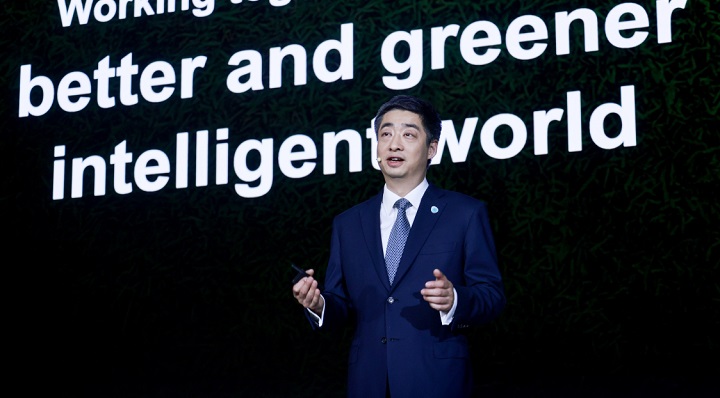Huawei kicked off its 19th annual Global Analyst Summit in Shenzhen. Huawei’s Rotating Chairman Ken Hu said that the company will continue to boost investment in innovation to build new products and enhance and accelerate new technologies.
“At Huawei, when we talk about innovation, the first thing we think is people. We hope to attract world-class talent with world-class challenges, and work together to push the limits of science and technology,” said Hu, referring to the Top Minds recruitment program that the company launched on its website.

“We don’t care where you’re from, where you graduated, or what you studied,” he continued. “As long as you have a dream for the future and believe you can make it happen, we want you to come and join us. We provide world-class challenges, a powerful platform, and all the resources you need to explore the unknown.”
Moving forward, Huawei is taking active steps to boost its business resilience and ensure steady development. “We have to keep the ball rolling through nonstop innovation, creating value for customers and society,” said Ken Hu. “We look forward to working more closely with our customers and partners to build a greener intelligent world.”
Dr. Zhou Hong, President of Huawei’s Institute of Strategic Research, said that “everything we imagine today is very likely to be too conservative – too little – for tomorrow. We have to meet the future with bold hypotheses and a bold vision, and throw caution to the wind as we push to break through bottlenecks in theory and technology. This is the only way forward.” He outlined ten challenges that Huawei hopes to address moving forward.
Two scientific questions:
- How do machines perceive the world, and can we build models that teach machines how to understand the world?
- How can we better understand the physiological mechanisms of the human body, including how the eight systems of the body work, as well as human intent and intelligence?
Eight tech challenges:
- New sensing and control capabilities, e.g., brain-computer interfaces, muscle-computer interfaces, 3D displays, virtual touch, virtual smell, and virtual taste
- Real-time, unobtrusive blood pressure, blood sugar, and heart monitoring, and strong AI-assisted discoveries in chemical pharmaceuticals, biopharmaceuticals, and vaccines
- Application-centric, efficient, automated, and intelligent software for greater value and better experience
- Reaching and circumventing Shannon’s limit to enable efficient, high-performance connectivity both regionally and globally
- Adaptive and efficient computing models, non-Von Neumann architectures, unconventional components, and explainable and debuggable AI
- Inventing new molecules, catalysts, and components with intelligent computing
- Developing new processes that surpass CMOS, cost less, and are more efficient
- Safe, efficient energy conversion and storage, as well as on-demand services
Huawei said, most Asia Pacific countries have very clear and forward-looking digital strategies. As the Asia Pacific region goes digital, a skilled ICT workforce will be critical. The region has a unique advantage in this area because it has a younger population than the US or Europe. Accelerating the development of ICT talent in the region will require concerted efforts from governments, businesses, and people from all walks of life.
In the Philippines, Huawei also had several programs for cultivating the local ICT talents, such as ICT Academy, Seeds for the Future, covered the Philippines for years, benefited over 9000 ICT students, according to Daniel Guo, the Vice President of Huawei Philippines.

